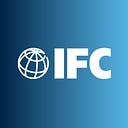October 24, 2022 | Charles Newbery
Demand is growing for blue and green bonds despite tighter conditions in the global financial markets, regional director says
The International Finance Corporation (IFC), a member of the World Bank Group, plans to increase its own investment and mobilize more financing from third parties in Latin America and the Caribbean over the next year, as the need arises for plugging a gap left by a flight of capital out of the region this year on rising global interest rates, IFC regional director Manuel Reyes-Retana told LatinFinance on Friday.
“We have very ambitious plans for the region,” he said in an interview on the sidelines of the C40 World Mayors Summit in Buenos Aires.
IFC plans to invest and mobilize a total of $9.3 billion in the fiscal year 2023, which runs from July 2022 to June 2023, up 6.9% from $8.7 billion in the previous fiscal year, Reyes-Retana said in his first interview with the media since becoming the regional director for Brazil, Ecuador, Peru, Bolivia and the Southern Cone on September 1.
He said that the already strong demand from borrowers to finance projects in the region has increased since global interest rates began to rise early this year. Central banks have been hiking monetary policy rates to try to contain inflation, which has been rising because of supply-chain disruptions stemming from the COVID-19 pandemic and the Russia-Ukraine war. Global inflation is expected to peak at 9.5% in the third quarter of this year before decelerating to 4.1% in 2024, meaning that financing will be expensive for borrowers over the next few years, according to the International Monetary Fund (IMF).
This has led to a flight of capital out of emerging markets to developed economies, leaving less money available for companies in Latin America.
The result is that development finance institutions “need to step up and try to not only address that gap but actually mobilize private sector sources to finance projects,” Reyes-Retana said. “The projects are still there, and the need for investment is still there.”
GROWING DEMAND FOR SUSTAINABLE FINANCE
Reyes-Retana said that a big trend in the region is for sustainable finance.
Companies in the real sector, he said, are “very concerned about decarbonizing their operations,” while financial firms are looking at new opportunities for sustainable finance, such as in the blue economy.
Most companies understand the importance of making their operations green, not only to sell to markets demanding sustainable products, such as Europe, but also to meet rising local demand for sustainability, he said.
“I don’t see another way to conduct businesses in the 21st century,” Reyes-Retana said.
Issuers are also seeking to sell more gender bonds, such as banks to use the proceeds for lending onto women-owned or -led small businesses, he added.
THE RISE OF BLUE BONDS
Blue bonds have a promising future in the region and globally. IFC is working with other companies to develop frameworks to sell blue bonds, including in Brazil and Peru, as well as in Ecuador, Reyes-Retana said.
Earlier this month, IFC reached an agreement to buy up to $40 million of the $79 million in blue bonds to be issued in the local market by Ecuador’s Banco Internacional, the first private-sector blue bond in the country — and Latin America.
“There is a lot of momentum,” he said, adding that he thinks that blue bonds are “the best instrument” to finance the challenges to preserve the sustainable use of oceans.
“It is definitely picking up pace,” he added. “I think that blue bonds will reach the level and probably even surpass the level of green bonds globally.”
A benefit of sustainable bonds is that there is “a lot of interest” from investors even during this period of high interest rates, especially for blue and green bonds.
“For issuers who are offering these still scarce asset class, it’s a good opportunity,” Reyes-Retana said. “We know that investors are looking for these assets.”
Indeed, Chile sold its its first sustainable bonds in pesos on Thursday, issuing CLP1 trillion ($1.02 billion) in 12-year notes after orders peaked at $3.5 billion. The bonds carry a 7% coupon, which is less than the 7.25% that had been expected. On that same day, Uruguay issued $1 billion in 12-year sustainability-linked bonds after orders reached as high as $2.9 billion. The new bonds have a a coupon of 5.75% and priced to yield 5.935%, or 170 basis points over US Treasury bonds. The initial price talk had opened around 195 basis points.
“If there is demand, there will be issuers,” Reyes-Retana said of green and blue bonds.
